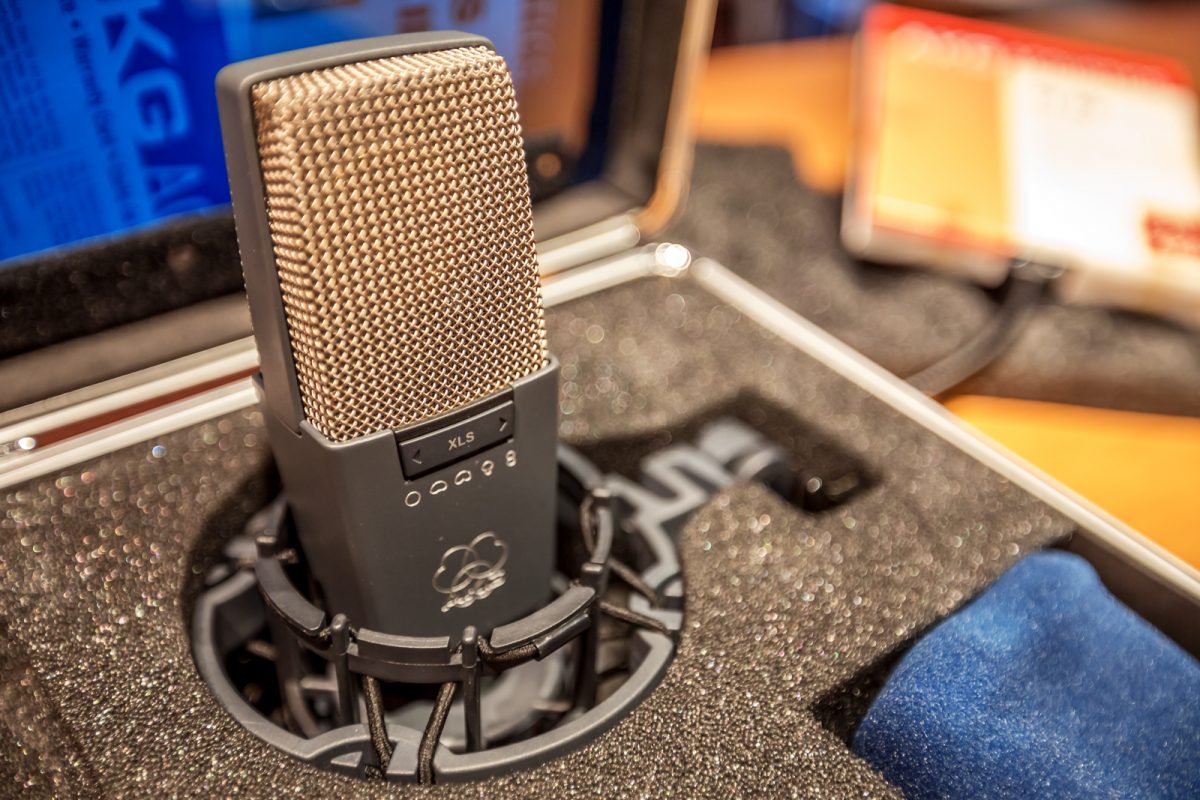Microphones are a huge part of the guitar tone your audience hears, both on stage and in the recording studio.
Table Of Best Mics for Guitar Amps
In both situations, your audience is hearing a chain of gear that begins with your hands and ends with their ears. In between, there are a few crucial pieces of kit that must be considered. Outside of your choice of amp and speakers, the microphone on your cabinet is the most important of these. It plays a bigger role in shaping your overall sound than most players realize.
Today, we’re here to learn what are the best guitar amp mics in an effort to give you tonal control.
Microphone selection and use is practically an art form in and of itself, as any engineer or sound person will tell you. Some folks will use the normal, expected choices for normal situations and others will go buck wild and use unusual guitar microphone and instrument combinations if it suits their larger purpose.
That being said, this article will assume that you want your guitar to sound like a guitar and not become a sonic character actor in your mix. The guitar amp mics here will work well in most situations where a mic is called for, and all have their own fans.
Ready to learn?
Here’s Our Selection of the Best Guitar Amp Microphones
Table of Contents
Shure SM57

The eternal SM57 has been the go-to guitar amp mic and drum mic for decades and with good reason: it’s practically idiot-proof and makes it easy for budding engineers to get tones quickly. Most people new to recording won’t need any other guitar microphone for quite a while.
The Shure SM57 is a dynamic mic, which means that it’s rugged, needs no external power, and can withstand high Sound Pressure Levels, or SPLs. It has played a part in countless recording sessions and live gigs from the smallest bars to the largest studios and stadiums. Your ears are most likely already attuned to the sound of a 57 whether you know it or not because at least half the guitar music you’ve ever heard was recorded with one.
It’s very hard to go wrong with these, so get a few.
- INSTRUMENT-FOCUSED PERFORMANCE: Contoured frequency response with presence boost helps your instrument cut...
- STUDIO AND STAGE LEGEND: The worldwide choice for professional musicians, from intimate recording sessions to...
- PRECISION SOUND ISOLATION: Extremely effective cardioid pickup pattern locks onto your instrument while...
See how it sounds:
Sennheiser MD421

It is another incredibly versatile dynamic mic that works very well for a variety of applications. In the fight for the best guitar amp mic for recording guitar sounds, it’s a worthy contender. The 421 is just as well-liked as the SM57 but it has a different sound to it. It has a wider frequency response than a 57, which means more highs and lows going to tape.
It is also built around a larger diaphragm and this gives it a greater degree of off-axis coloration than the Shure. Off-axis artifacts can be a problem in some situations but, on a guitar amp, they only add more vibe and character.
421s have been popular since hitting the market over 35 years ago and have become a must-have tool used on guitar amps, drums, group vocals, and other sound sources. They are my personal favorite electric guitar microphone.
Even if you have 57s, you should get a couple of these too. They’ll come in handy.
- Rugged professional microphone with clear sound reproduction, excellent for most recording conditions and...
- Large diaphragm, dynamic element handles high sound pressure levels, making it a natural for recording guitars...
- Five-position bass roll-off switch make it an excellent choice for most instruments, as well as group vocals...
See how it sounds:
Sennheiser e609

This guitar mic is a specialized tool that excels at its one job. Its shape allows it to be hung over the front of an amp or speaker cabinet for micing, which eliminates the need for one mic stand each time you use it. It also uses the less-than-common Super-cardioid pickup pattern. This makes it excellent at rejecting off-axis sounds and coloration for better isolation of instruments live or in the studio.
Even further, it has a hum-cancelling coil that helps block noise and interference from other sources. Some users feel the 609 is a ‘better mousetrap’ situation compared to its storied competitors and it has become a popular guitar microphone choice.
- Metal construction-rugged and reliable
- Super-cardioid pick-up pattern provides isolation from other on-stage signals
- Hum compensating coil reduces electrical interference
See how it sounds:
AKG C414

The AKG C414 is a legendary condenser guitar microphone that works like gangbusters on just about anything you happen to stick it in front of. It is probably the most versatile condenser mic available and has been used on vocals and all instruments with wonderful results. Any studio that can afford one should get one. You’ll never grow tired of using it. These things love guitars to the moon and back.
- Engineered for highest linearity and neutral sound for beautifully detailed recording of vocals and any...
- Nine selectable polar patterns for the perfect setting for every application including: Cardioid, Figure of...
- Audio frequency bandwidth: 20-20000 Hz. Equivalent noise level: 6 dB-A. Sensitivity: 23 mV/Pa. Signal to...
See how it sounds:
Royer R-121

The 121 is not large and easily damaged like the ribbon mics of old but rather it is tough, compact, and built for the modern world. It has so many fans that it may well become the first great mic of the 21st Century. As expected, the Royer has a Figure 8 polar pattern and the output level of a dynamic microphone.
What is also has is an incredibly warm sound, a flat frequency response, and the ability to stand up to guitar amps, brass instruments, drums, and other loud and lovely things that would destroy one of the ribbon mics of the past.
It uses Royer’s patented offset ribbon transducer technology, a design that puts the ribbon closer to the front of the microphone and allows it to take high SPLs without failing.
The 121 is priced beyond the means of many home studios but is worth saving up to get. It’s a game-changer.
- THE SOUND OF ELECTRIC GUITARS and so much more!
- HIGH SPL CAPABILITIES: No internal active electronics to overload or produce distortion up to maximum SPL...
- FIGURE-8 POLAR PATTERN
See how it sounds:
Last update on 2025-12-19 / Source: Amazon


Thanks Mike!. after listening to many youtube tests, reading many articles and forums, and testing with my several mics I find your advice is a great guideline.
I have to add that, as some of those microphones are really expensive or people may have others at hand, the first step is test with your current condensers or ribbons before going to the Most expensive ones, (Eg Royer R121). In my case, Heavy metal style, power metal, i was surprised that some of my small condensers -drum overheads, hihat micros-, worked GREAT, maybe not like R121, but still very good. I am very tempted to just put my AKG451B- 2 inch from grill, edge edge of cone- for the heavy riffs in my next EP, sound more direct/clear, crispy, less muddy/midrangy than my SM57. On the other hand, a LEWITT LCT340 is a great pair of the SM57, in a 1:2 or 2:1 blending ratio.
So, either SM57 and e609 are a must for the dinamic choice, and several good condensers can also do a very good job (but suppose that R121 makes a difference…).